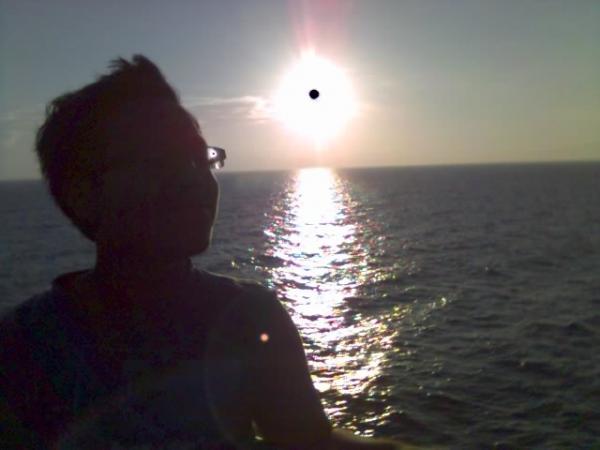Hari ini diawalin dengan bangun pagi (kesiangan) pas jam 10. Niatnya sih mo masuk kuliah Critical Reading, but berhubung bangunnya kepagian, ya mau g mau meliburkan diri (bahasa yg terkihat sedikit sopan) dulu.
Maksudnya sih g msk Critical reading gpp, tp ntar pas kelas Novel harus masuk. Eh entah kenapa badan rasanya malas banget buat digerakin. Masih betah aja ngutak ngutek blog yg emg udah sejak dulu g pernah digarap. Padahal tadi malam jg udah ngelembur ampe jam 2. So, kuliah hari ini g masuk semua (baguuuuuus.. lanjutin aja). Ya sudahlah g usah dimasukin dalem ati, itung2 bsk pan jg hari libur, jd ya sekalian aja diliburin hari ini.
Beruntung tadi si Aryo sms, ngajakin karaokean. Okey, siapa takut. Suaraku sekarang udah g kalah tuh ma vokalis" band jaman sekarang, apalagi ma penyanyi jaman dulu. Beuuh..
Akhirnya kita pun karaokean kaya org g pernah karaokean. Udahlah libas aja, yg penting nyanyi. Sayangnya tadi lupa sms Alvan suruh bw SLR dia. Ya si Aryo emg g pernah bs dilepasin ma Alvan, udah pd lengket kaya perangko aja. Hehe.. jadi dimana ada Aryo pasti ada Alvan dah. Hihihi..
Jadi pada dasarnya, hehehe.. kita be3 aja nih yang karaokean g jelas. Tadi mo ngajakin si Ibre, tp si Ibre menolak dengan tegas bahwasanya (lebay bgt nih bahasa) dia g punya duit. Hehehe.. gpp Bre, ane aja pake cara ngutang kok, hehe.. yang penting senang dulu lah.
2 jam berlalu, suara kita udah pada habis tuh, udah kaya tokek dah yg bisanya cuma negluarin suara 'tokek', lebih parah mungkin.
Setelah menguras suara dan uang (g bisa g terkuras kalo yg satu ini), akhirnya kami cabut dah ke rumah masing. Jangan lupa PR Matematika dikerjainnya, besok dikumpulin soalnya (paan sih). Aryo tetep pulang brg si Alvan (Lha iya lah, ms plg brg aku, hehe).
Pulang samper rumah ni, Bang Uya ngajakin badmintonan. Ok, ntar malem tak jabanin, lagian dia blm tahu smashan ku. Liem Swie King mah lewat, jangankan kok yg rusak, lapangan jg iya (gimana g rusak, lha emg mainnya di lapangan yg udah g kerawat). Tapi si abang yg atu ni g sabaran.
"Kita pemanasan dulu yok gan." ntu katanya.
"Nih, ane pny 2 raket. Modal minjem. Lumayan lah."
Beuh.. si abang ini, modal minjem aja bangga. Tapi gpp lah, lumayan jg daripada lumanyun, hehe.. Akhirnya maen dah kita di lapangan tetangga (bukan lapangan ding, pekarangan tepatnya).
Belum ada setengah jam, muka kami berdua udah kaya kuli yg kerja ngangkutin batu2 granit gede di Gunungkidul. Main udah asal2an, pake gaya jadi kidal segala, gpp lah, yang penting jadi keringat. Tapi ni keringat terganti juga dengan segelas es marimas. Seger bener..
Udah dulu cuy, mo mandi dl nih, drtd lum mandi.. entar updetannya kalo ane udah siap ngetik lagi, OK?? hehe..



